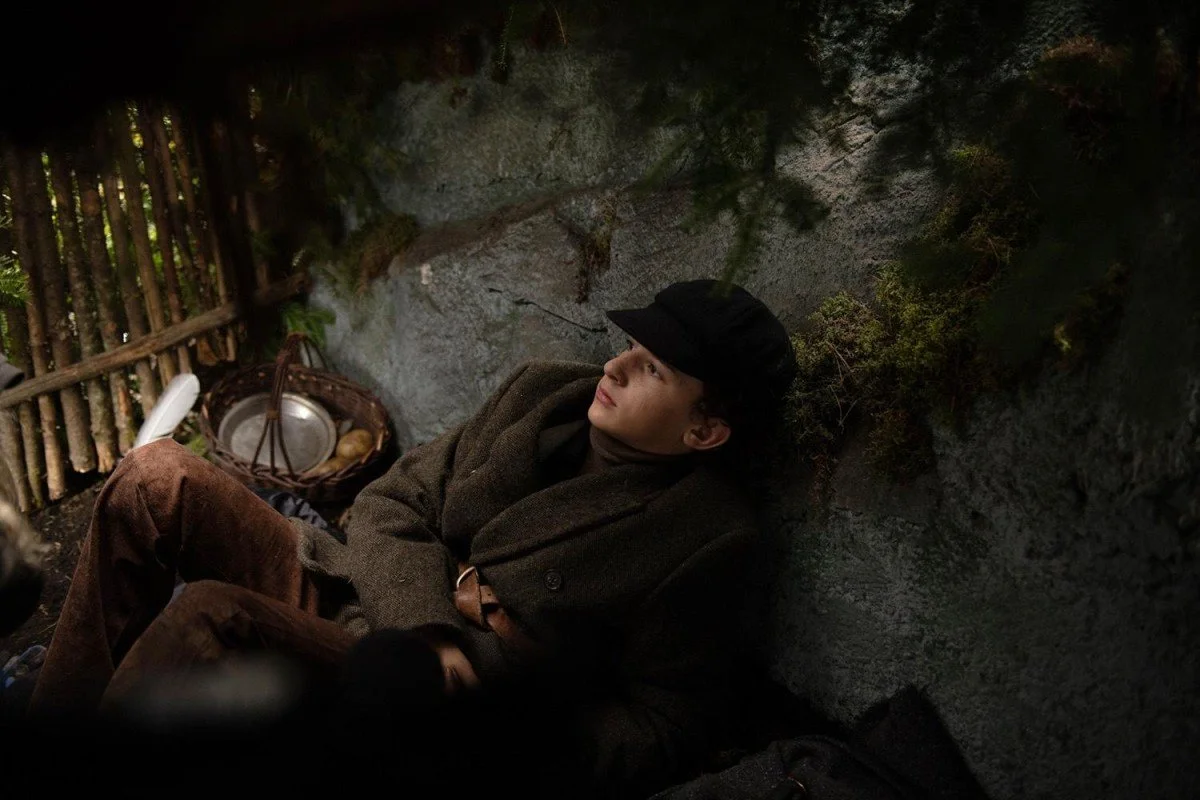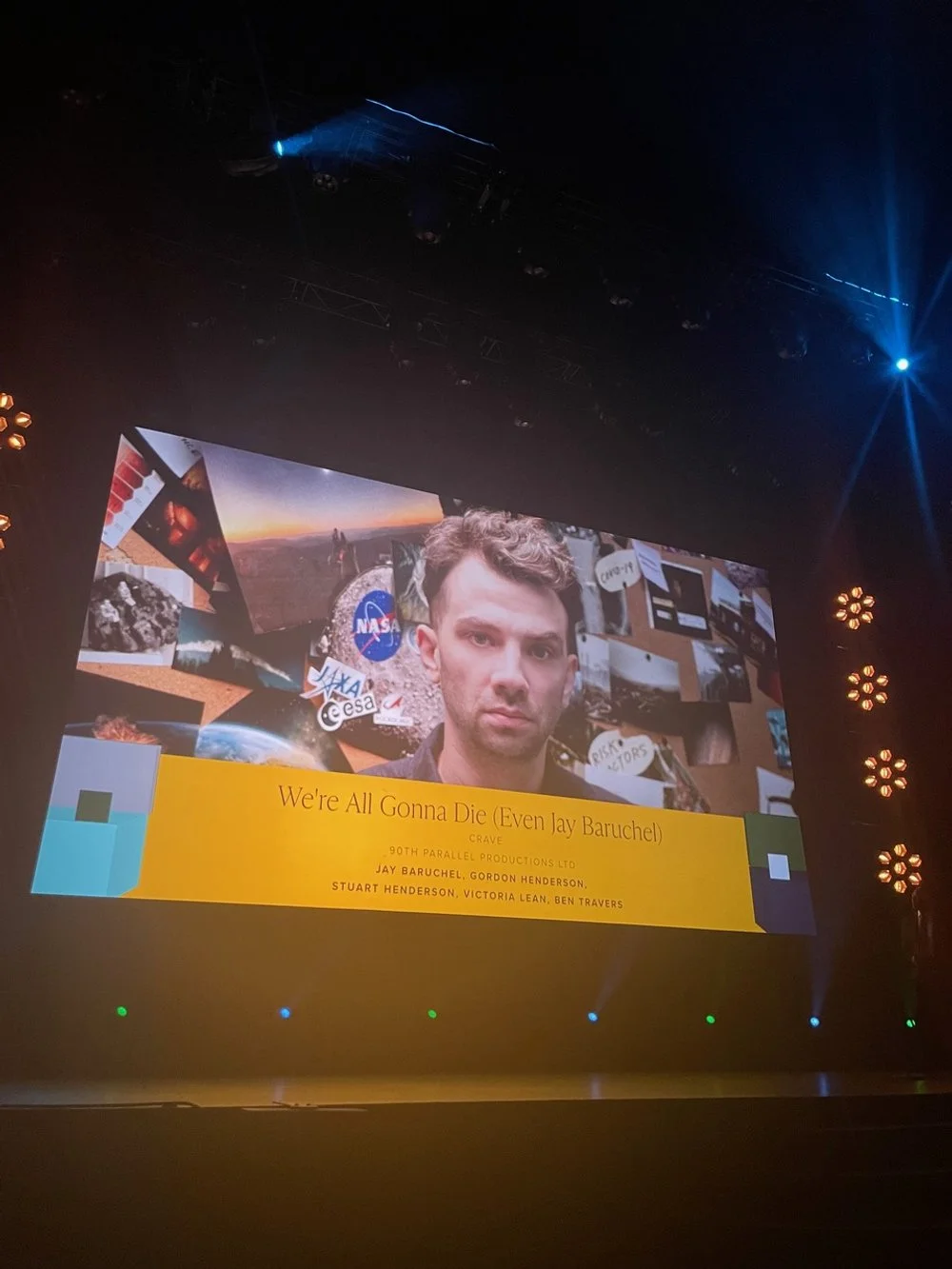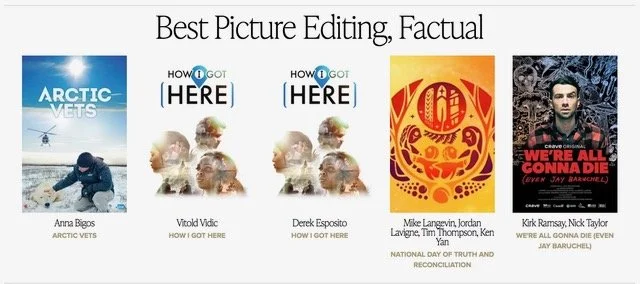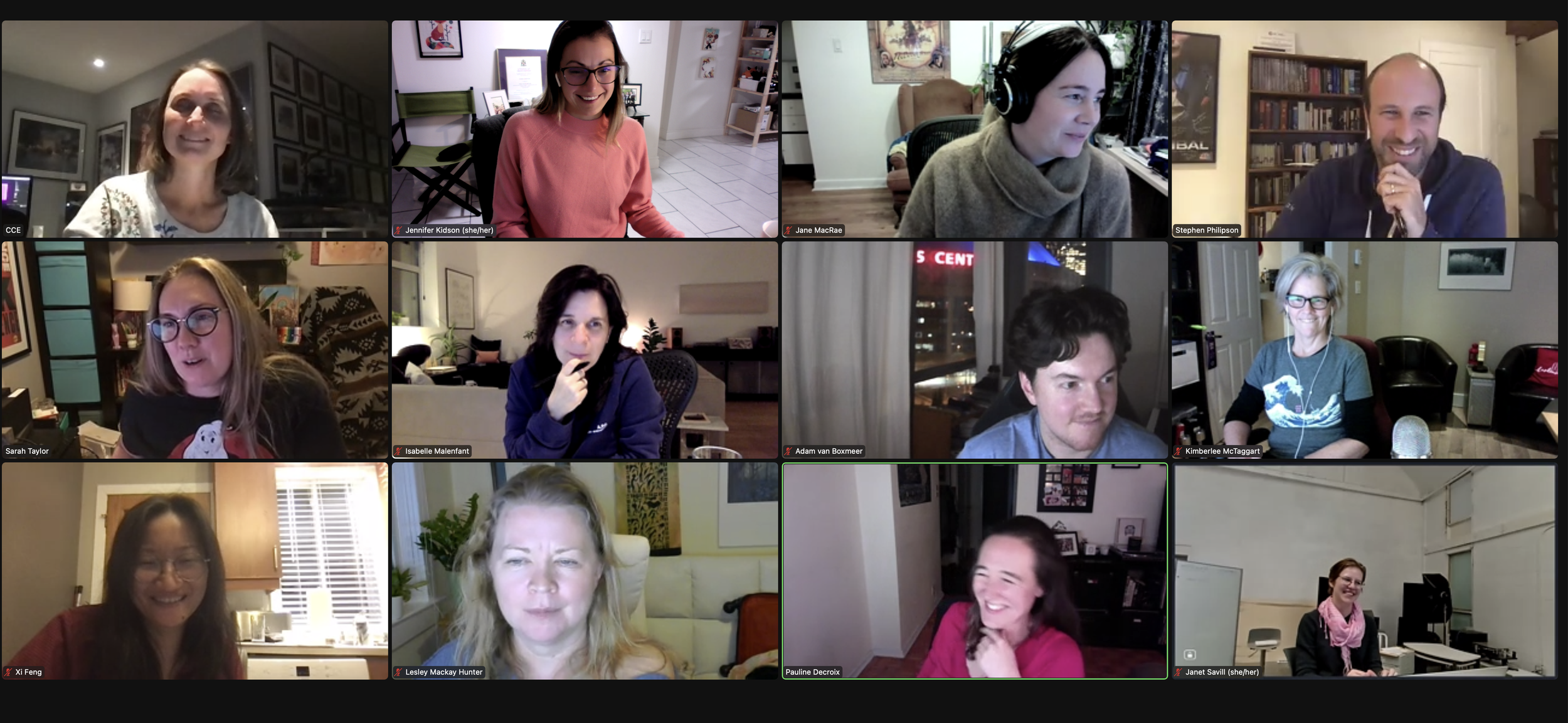We’ve launched the beta version of the Canadian Cinema Editors / Les Monteurs et Monteuses de cinéma canadien today and we are so thrilled to present this milestone with you…
Widescreen Thriller: A Most Violent Year
Let us continue the tradition of using Ted Hope's five criteria when it comes to cinema: what five things do we want from cinema? This past week, I had the privilege to watch A Most Violent Year (2015), starring Oscar Isaac, Jessica Chastain, David Oyelowo, and many others. Written and Directed by J. C. Chandor.
- Where did this film take me? To 1980s New York New York. This year is actually recorded to be the most violent year the state has yet to see. From the rich suburbs of the wealthy, to the dockside industrial slums of those battling the American dream. We are delivered the film through the CEO's vision. He is an immigrant chasing after the prolific American dream. His wife, from a rough NY neighbourhood with a notorious father, equally an outcast. Together, though, they are a powerful couple. Perhaps I can expand on this point and explain HOW J.C. Chandor took me back to this historical moment. Let us first talk about the first five minutes of the film as the credits are rolling. Perhaps one of the most interesting film introductions I have seen in a while. Delivered in a widescreen format, the footage feels stretched and condensed at the same time. However, you never miss a moment. The film begins with what we can assume is the protagonist. We see him running through a quiet suburban neighbourhood. The music is not inviting but it is also not unpleasant. It says, "WAIT, don't get caught up by the beautiful imagery. All is NOT well." The steadycam replicates the point-of-view of the runner, immediately pointing us to see what he sees, therefore indicating that the main perspective will be filtered through Abel. It is Abel Morales' (Oscar Isaac) story. The next character is introduced in a two shot sequence, first a medium wide shot and then a medium close up. This camera work tells us, "OKAY, don't forget this secondary character. He is indeed important." Back to the runner, he is now in an industrial landscape, headed towards a dockside. An oil barge offloads its product into a truck. Cut back to the runner. We understand he is somehow related to this action. His attire - sweatpants and a hoodie - do not disclose his position in the oil company just yet. He is still running. We as the audience ask if he is training for a marathon? Why run so long? Only after do we realize he is training himself to keep up with whatever is thrown across his path. All these actions takes place within the first five to ten minutes. We learn so much about the film because of the camera work and how it compliments the action. We get a sense of who is important and what the story is going to be about. It is brilliant.
- How did I feel during the film and after the film? There is an immediate quietness about the film that I am unable to explain. It was an uncomfortable quiet. The kind that has you waiting tensely for something to happen. The film never felt slow though, mostly because we understand the time frame of the story: thirty days. Thirty days to close the agreement on the land he purchased. Forty percent upfront and the remainder at the end of the thirty days. Each day is thus accounted for and keeps us and the characters on the same level. Therefore the stillness and unsureness are a combination of things. This film, in many ways, replicates that feeling in Steven Spielberg's Duel (TV special). Throughout the entire car and truck chase, viewers have the need and desire to see who the truck driver is. Not because we particularly care for him, but because we are purposely prevented from seeing him by the camera / director - thus creating desire. The death of the truck driver heightens the disavowal and leaves a burning disappointment - desire unfulfilled. Similarly, Abel spends thirty intense days trying to find out who is robbing his trucks and who tried to enter his house with a gun. He eventually chases one thief down. Abel asks him twice, "WHO ARE YOU WORKING FOR?" This is a major thrilling moment and we the audience are sitting at the edge of our seats waiting to hear a name spoken. Then the disavowal takes place. The man replies, "I don't work for anyone." Abel is no closer to the truth and we feel his disappointment most profoundly. The evil lurking in the background is undetectable. It only exists through the radio broadcast system as an effect. The cause - le raison d'etre - lies out in the filmic world in a secret untouchable form. We are unsure what the purposes are, although we can surmise that it is most likely financially driven. The ending received a lot of negative attention apparently after the first few screenings. The composer was worried that people would disapprove of Abel's actions and write him off as a cold money hungry CEO. Yet, I felt the complete opposite. I felt proud to have been on his side. I will expand further down.
- What issues were discussed and how? Issues of immigration, generation, family, and business blended together and rose up in contrast to the american dream. In this dystopia the action unfolds and the characters have to carve their name in stone with their fingernails. There are four stories playing simultaneously: Abel's quest for dominance in the oil industry, Anna's fierce and loyal passion to see her husband succeed by any means necessary, Julian's hungry desire to one day be Abel, and Lawrence's tired and never ending bureaucratic desk job. Abel has to secure his deal with a Jewish family that owns a prime piece of property on the waterfront. Old money sells their family owned site to new money - to a self made man. Two generations of immigrants are immediately introduced. The third generation comes in the form of Abel's antagonist: Julian. While Abel adopts American culture, Julian fights in limbo - Abel asks him several times to speak in English. Julian is in many ways a younger version of Abel. The difference lies in the paths each choose. Abel's philosophy about taking the path that is MOST right stands in stark contrast to that of Julian's fearful, cowardly approach. Guns are seen as cowards' weapons. Abel refuses to let his workers arm themselves for fear it will intensify the problem even further. Julian's fear backfires when he is unable to own up to his actions. His American dream is unsustainable. We can even draw quick similarities with the characters in Spike Lee's Do The Right Thing (1989). Abel is like Mookie. Julian is like Pino. Sometimes the path that is most right seems at first morally tainted. Yet Mookie saved Sal's life by distracting the angry crowd with destroying his pizza joint instead. Abel is unable to save Julian, but promises to care for his family. His success, and we are never given any reason to doubt the sincerity of Abel's character, is attributed to his choice of taking "the path that is most right."
- Surprises? DUH. Jessica Chastain's character, Anna. She is a very complicated character. How many complicated female characters have we seen recently at the box office? She is the gangster her husband refuses to be. She is the hard shell that is able to kill the deer her husband cannot. She steals from him and then returns the money in order to save the family. She is the book keeper. Yet, she is never given credit for her work. It is clear Abel loves his wife and family. It is clear he has strict moral beliefs and follows them as much as possible. Yet, when does he ever truly acknowledge his wife's help? He forgives her time and time again for her erratic behaviour. He coaches her to take the right course and to dispel her gangster tendencies. She works for him and takes care of the family. We see a nanny only once acting as a babysitter, indicating her true devotion to her children. She attends all the social functions with her husband as a strong supporter. She risks threatening a cop who has interrupted her 10-year old birthday party, "my husband is not who you think he is. He is an honest man. If you disrespect him, he will make it his mission to ruin your life. And this was very disrespectful." She is the chilling - fiery ego Abel refuses to be. They compliment each other perfectly. She says what he is thinking and she does what he wishes he could do. Together they are an unstoppable force.
- The transformative experience: who is transformed in the end? As an audience member, I believe I felt the most affected by the experiences on screen. I felt the elation of Abel's victory, the fiery passion behind Anna's success in managing her husband's affairs, and the silence of Julian's death and world. During the post production phase, the composer was worried that people would walk away thinking that Abel is a cold hearted money hungry CEO. He cared little for Julian's death, saving the hole in his oil barrel first. The song at the end is supposed to guide the audience emotionally to steer clear from these complicated feelings. I did not think of Abel as anything other than an honest and hard working man. Abel's ability to pay off the remainder of the property value is in large due to how his company behaves for thirty days and how they conduct themselves during all the robberies and violence. The stress of losing everything he had worked hard for was apparent every day. How can you argue with that level of simplicity? Yet, as a CEO with many employees, he makes time to visit Julian in hospital and pay for his expenses. He makes time to visit the new trainees. He takes time to make sure anyone who got hurt on his clock was taken care of. The most shocking scene is when his youngest daughter discovers the gun and cocks it playfully. Anna has to slowly approach and take it out of her hand. Abel takes in the seriousness of the situation: it is one thing to hurt his employees and another to threaten his family. He faces his competitors fiercely but fairly, he asks for what is his and no more, "you owe me $213,000." Abel presupposes Mookie's charisma and courage, and always does the right thing.
In conclusion, A Most Violent Year was an awe inspiring experience. Coupled with an amazing cast, a superb sound score, and the widescreen aspect ratio, I highly recommend viewing this artwork in cinema before it passes away.
- Jenn
What do WE want from cinema: Inherent Vice
I had a really unique movie going experience last week. At 9:20pm on a Tuesday night, I trekked alone to Cineplex Odeon Varsity Theatres at 55 Bloor Street, Toronto, for a VIP screening of Inherent Vice (2015). Directed by Paul Thomas Anderson, adapted by Thomas Pynchon's novel, this is by far one of the most interesting films I have got to see this year.
Before I go into my analysis, though, I came across this intriguing and perfectly applicable article from the website Hope in Film: The Five Crucial Things We Want From Movies. Written by Ted Hope, this article suggests the following list.
- Take me somewhere I have never been
- Make me feel
- Help me understand this issue / world a little better
- Deliver fun and surprises
- A transformative experience
With this as our backbone, let us now take a look at Inherent Vice through these five filters / criteria.
- Inherent Vice takes place in south California during the transition between the 60s and 70s. On the outset, this town seems to have three kinds of people: hippies, gangsters, and law-enforcers. However, by mid movie, the types have become so muddled that by the end each character is neither him nor herself and are a mish-mash of everyone. A bit like The Beatles song I am the Walrus "I am he as you are he and you are me and we are all together." Yet no one in the film is together. Relationships are never whole, and people are as much present off screen as they are on screen, making the loose episodic plot structure more hippie-ish, if you will.
- WOW. How did I feel? Where do I begin? First, let's talk about the voiceover narration. Can we even call it ironic? It is a bit Godardian in the best way, calling attention to the story's realities as unrealities. The pumping action of private investigator Doc Sportello is highly undercut by the mellow female voice, taking your heartbeat down four notches into a normal rhythmic speed. She calls attention to the fading past, the psychedelic 60s slowly evaporating. All that California was is embodied in Doc. And he is hated every moment for it. He is the dinosaur of the south. A T-rex hunting for the truth of the golden fang. What feelings can we say the film conveys? There is this uncomfortable sense of unknowingness - a paranoia that slowly seeps into your bones and makes you fidget in your seat. There is repetition, creating a cyclical feeling that adds to the claustrophobic environment. If you were asked to loosely sketch Doc's world, could you do it? Do we know where all the puzzle pieces fit? I felt hazie leaving the theatre, as if a smokey cloud had settled around me head. A sudden second-high. There was also humour - in an unchecked and unbalanced way. We laughed without restraint but not because we were set up to laugh or forced to. It felt more real somehow.
- I had not read Thomas Pynchon's novel before watching the film in theatre, and believe this might have filled in any loose gaps my brain is still trying to solve. I do not know much about the early 70s to justify the films explanation. Yet, taking it for what it is and disregarding (momentarily) its time in history, what did I take away? What statement is the film making - and even if it is NOT making a statement, that is in itself a statement - and how is it resolved? I think Doc justifies his good character at the end. He is able to reunite a family together and saves a father (Owen Wilson) from being further involved in a network of cocaine dealers. Sure the family is unromantic in the best way - and the parents are the least prototypic of their kind - but there is a sense of charm seeing the two hug at the end. The set, setting, costumes, and soundtrack created a quintessential aura, what I would think would be an accurate 70s mise-en-scene for this film.
- The greatest surprise was the dialogue. The dialogue between characters differs greatly: legal and proper jargon from his girlfriend downtown (Reese Witherspoon), the slow drawl of his drug friend pretending to be dead (Owen Wilson), and the strange and often perverted comments from Lieutenant Bigfoot (Josh Brolin). Actions often contradict the characters verbal intent. Bigfoot angrily refers to Doc as the hippie, yet storms his house at the end of the film and eats a lot of weed sitting out on the table. Deputy Penny Kimball, a serious woman of the law, is caught smoking weed with Doc and having a jolly good time. The humour is dry and the banter delivered in a hyper serious manner to the point of being at the cusp of hilarious: "woohoo, look at the greedy little hippie." "Bring a bar of soap and you can clean my feet tonight." "Ew. I can bring you pizza though." "There is a swastika symbol on that man's face." "No there isn't. That is an ancient Hindu symbol meaning ALL IS WELL." Do these characters know they are funny or do they take themselves seriously?
- Transformative: Ted suggests that this can be for either the viewers or the characters on screen. Still unsure as to how Doc is feeling - probably rather groovy for saving the day (?) - I definitely felt transformed. My opinion about romance, life, beach-house living, the 70s, and the radical 60s has definitely been intensified and caught my interest. This film told the story in a whole new way. The experience was unique and something I am sure to never feel again. Even when I go see the film for a second time, I am sure to feel slightly different. I think in an era when originality is rare and films have become almost colloquial communication tools, it is definitely hard to find that new angle. As my favourite dead poet, Samuel Taylor Coleridge, commented on in his poem "Kubla Khan," the public will scorn this type of artistic creation. They will stomp and spit and refuse entry into their narrow perspective. Bret Easton Ellis shares this perspective in his article Novelist and Screenwriter Bret Easton Ellis Talks Paul Anderson's Inherent Vice.
"Anderson’s epic vision of Southern California in movie after movie is one of modern cinema’s key accomplishments — the scope is a marvel. But the audience for Inherent Vice is not going to be rapturously discussing it this Christmas — the harsh words I heard behind me as I left the screening last week have been echoed all over the place when I ask people who have seen it what they thought, and the pre-release take-down of it around L.A. is surprising to me [...]" - Bret Easton Ellis
I understand where this assumption is coming from and find it so sad. I suppose everyone is entitled to their opinions - and there are always going to be those films that are landmarks and only become so in a new generation of understanding - and hopefully open-mindedness. I say HOORAH for Anderson and all the performances in the film. A job well done. A film highly original and intriguing. Thank you for making my Tuesday night so groovy!
- Jenn
Fantastical: One More Time With Feeling Mr. Fox
This is about a movie that has been out for a while now but comes from one of my favourite directors, Wes Anderson. His first children's movie, The Fantastic Mr. Fox, came out in 2009. I only realized after the fact that this director created The Royal Tenenbaums, another favourite of mine. I had felt that same joy I had during The Tenenbaums as I did in Mr. Fox. Then a wondrous friend connected the two together and I became instantly an auteur fan. For indeed, Wes Anderson is an auteur.
Mr. Fox is a film about self realization. Each character is a wild animal with a unique personality. The narrative blooms into a story about individual discovery and character development. All the animals at times fight domesticity. They are bound my moral code. The conflict arises when Mr. Fox breaks from the mold, upsetting the entire community structure.
Mrs. Fox asks why Mr. Fox robbed Boggis, Bunce, & Beans. He reluctantly admits, "I am a wild animal." We know he is a fox from the beginning, even if he wears a domesticated suit and lives in a domesticated "human" environment. He hunts chickens, inhales his food savagely, and lives in a burrow.
Ash knows he is different but doesn't want to admit it. He wants everyone to see that he is an athlete. He has to convince his dad and mom that he has what it takes to uphold the family name. He is able to change Mr. Fox's opinion during the Kristofferson rescue. Mr. Fox says "you are an athlete. Here put on this bandit hat." What Ash originally lacked was the authorial voice (Mr. Fox) to authenticate his character. Ash had to believe he was an athlete before he could become one.
The action is predicated on the characters discovering who they are and finding the words to describe their characters (or in the case of Kylie, he decides to express himself in gestures at the end). Mr. Fox intelligently refers to each of his community friends by their Latin name: vulpes vulpes, meles meles, lepus europaeus, etc. This is the major signifying moment in the film. They become wild animals with distinctive characteristics. Okay, maybe not the pyrotechnics and blowing up things (cough Badger). The characters are both familiar and unfamiliar. They are wild but tame. They cohabitate and think individually.
The brilliant banter between characters and the all to familiar voices behind the puppets gives this Roald Dahl classic new breath and meaning. Truly a brilliant film filled with brilliant sounds:
Mr. Fox: Pete's Song
Everything in the miniature world seems believable. In The Wes Anderson Collection, a book by Matt Zoller Seitz, Wes talks about using Rahl Dahl's actual house as a model for Mr. Fox's tree home, bringing the outside non-fictional world into the fictional world itself - linking author and character together.
The major narrative conflicts are tired neatly together at the end, the pinnacle moment being a silent encounter between a lone Wolf and the Fox rescue team.
A brilliant film. In case I didn't say it before.
- Jenn






